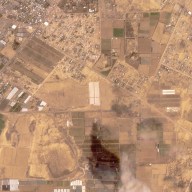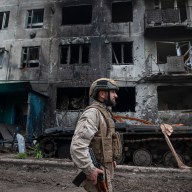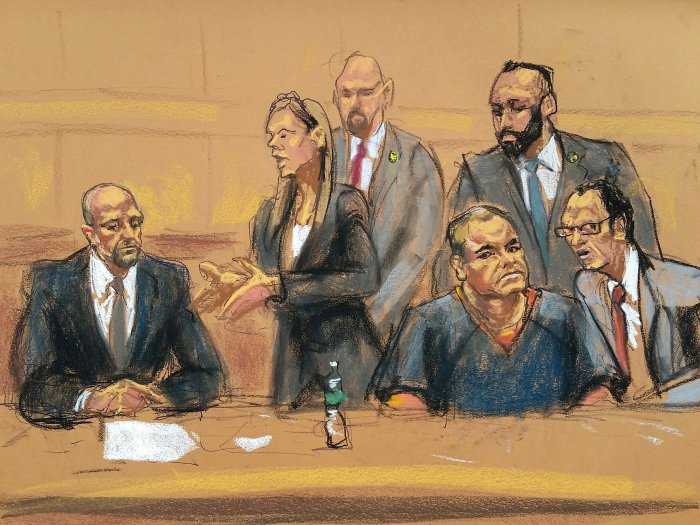By Ellen Wulfhorst
NEW YORK (Reuters) – Thousands of volunteers fanned out across New York before dawn on Tuesday to conduct the city’s yearly homeless survey, trying to count the people who wander the sidewalks all night, sleep in subways for warmth or slip into the shadows to avoid being seen. New York City, like other major U.S. cities, uses a count of people living on its streets and alleys, parks and subways to estimate program needs, allocate resources and educate the public on issues facing the poorest residents. The tally is also critical for accessing federal funding to tackle homelessness.
Critics say it grossly undercounts the homeless population, while others say a flawed count is better than none.
Last year’s count by the Department of Homeless Services found 3,357 street homeless people in New York City, most of them in the subways. A final count from Tuesday’s tally will not be released for months. Among those getting counted this year was Cynthia, pushing an overloaded grocery cart through downtown Brooklyn, where temperatures were below freezing in the hours before dawn.
Clad in a thin dirty t-shirt under a jacket, and wearing just one mitten, she politely declined help with a rambling tale of lost keys and a kidnapping. She also said her real mother was French fashion designer Coco Chanel. A man named Charlie spoke just enough to indicate he preferred sleeping in a subway car to homeless shelter accommodations.
Another man walking to a subway insisted he was fine and had a place to sleep, but his thin clothes and tattered bag rendered his story unconvincing.
Mary Brosnahan, president and chief executive of the Coalition for the Homeless in New York, said despite such stories, the tally’s methodology is deeply flawed.
“Just doing a head count in the middle of a freezing cold night is probably one of the worst ways to get an honest estimate,” she said.
Among those missed are people who might be hiding, often those who are mentally ill, she added.
“They make themselves less visible to survive the night,” she said.
According to recent tallies, the number of street homeless in New York City is down 24 percent from a decade ago. But the overall number of homeless people living at shelters or elsewhere is at an all-time high of about 60,000, according to officials. On hand to talk to some of the count’s volunteers, Brooklyn Borough President Eric Adams said: “I believe in this.”
“You’re not going to count everyone, but you’re going to get a good understanding of what the homeless issue is,” he said, citing gentrification and sky-high real estate prices as key factors. “The number of people who are homeless, who are on the verge of being homeless or living day to day in fear they are going to lose their home, this is a real issue,” he said.
But New York City does not ask volunteers to venture into places that may be dangerous such as abandoned buildings or makeshift shanty towns, said Kim Hopper, a medical anthropologist and professor at Columbia University who is an expert on homelessness research. While necessary for safety, avoiding such areas could skew the numbers, he said. “It does not get at the harder question of ‘What about all the people whom you can’t see?'” Hopper said.
Nonetheless, said Nan Roman, head of the National Alliance to End Homelessness in Washington, defended such counts.
“Obviously it doesn’t capture every single person, and it’s affected by the supply of beds and the temperature but, having said that, I think it’s extremely valuable,” she said. “It’s the best we have.” (Reporting by Ellen Wulfhorst; Editing by Barbara Goldberg and Susan Heavey)


















